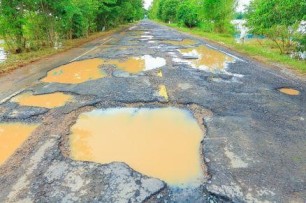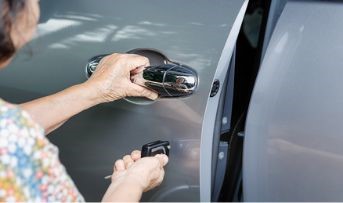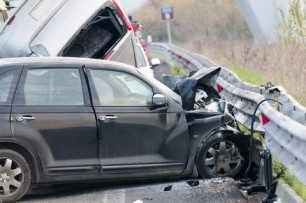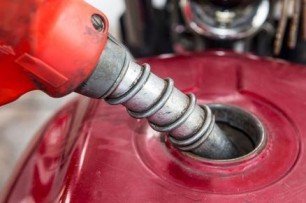General Insurance Blogs, Articles & Updates by - Magma HDI
Have us call you
- RENEW YOUR POLICY
- BUY NEW POLICY

Understand these smart tactics that car salespeople won't want you to know
Buying a car is more challenging than it seems. The salesperson uses many tactics to prevent their buyers or sellers from negotiating. Usually, buyers who lack detailed information about car sales and the buying process fall victim to these tricks the salesperson uses to draw more profit.
You also have to consider various things, such as auto loans, RC transfers, and hidden charges, when estimating the price of the car. So, you can create your strategy against these persuasive tricks and get your choice of car at a reasonable price. Here are some tactics that are commonly used to influence the customer.
1. Psychological profiling:
The car salespeople use the scripted questions to break down the needs and vulnerabilities of potential customers. These salespeople are experts in persuading people. The first question most car salespeople ask is about your budget. If you answer this question, you will show a vulnerability to car salespeople.
You should refrain from discussing your budget, family needs, vanity, and urgency to buy and ask for a test drive before signing papers. If you find a car you want, negotiate the price and leave trade-ins and add-ons for another discussion.
2. The Ben Franklin close tactic:
Most car salespeople use this classic tactic to fool the customer into buying a specific car. In this method, they draw a line down the middle of a piece of paper and list the reasons to buy or not buy the particular car. The information from the salesperson is either half true or false. You should avoid falling for this trap and becoming a victim of their motive.
3. The Porcupine close tactic:
The car salespeople use another tactic that includes a question starting with "if." For example, "If I can get you this monthly payment, will you be willing to buy this car today?" Car salespeople use this strategy to find a buying trigger in their customers.
When your car salesperson asks you this type of question, you should answer it with a negative. Instead, telling your car salesperson that you are negotiating with other dealers to get the best deal.
4. The waiting game:
When you go to your car salesperson to buy a car, there are salespeople, a team leader, a general manager, and more levels of leadership. They waste your time and trick you into selling what they want. If your car dealer takes too long to start moving the deal, you should call the deal off.
5. Look after the overall cost of the car:
People research the price of the car and divide the numbers into a down payment and a monthly payment. Most car dealers offer you monthly payments. You should ask them about the total price of the car and their best offer.
You can use an online car affordability calculator to check how expensive a car you can afford. Stay in the range and consider other things such as dealer fees, car insurance, and more. Choose the best car insurance company in India to get reliable insurance at the right price.
6. The impending event tactic:
Car salespeople use another tactic to sell their cars without negotiating. In this tactic, the car salesperson says that you need to buy this car today to take advantage of a big opportunity to buy it, or some other customer will get it.
You should refrain from showing any urgency and telling the car dealer in their eyes that if you come back tomorrow, they will not sell you this car.
These were a few ways to smartly deal with the tactics of salespeople and outwit them. Always stay alert while making such big decisions. Rely more on your research, compare different brands and categories, and take a test drive before the final purchase.
It is compulsory for people who buy a new or used car to get car insurance. When you find a strategy against the car salespeople's tactics, you should also look for the best car insurance company in India. Car insurance brings you many benefits, including personal accident cover, no claim benefits, damage or loss to insure a car, and third-party liabilities. Buy one today to make your driving experience safe and convenient.
Click HERE to buy insurance from the best car insurance company in India.
Disclaimer: The information provided above is for illustrative purposes only. To get more details, please refer to policy wordings and prospectus before purchasing a policy.

Here are a few potholes survival tips while riding a bike during monsoon
Due to heavy downpours every year, the Indian roads are severely hit and damaged. The potholes and cracks make the roads less motorable, and vehicles have to find their way safely by tackling them.
Potholes are dangerous for driving during the monsoon and rainy seasons, especially for bikers. Alongside this, the extra danger of your bike's wheels slipping on roads adds to the stress of accident possibilities.
Riders must exercise extra caution for a safe ride during the monsoon season. If you drive a two-wheeler in the rain, you should keep the following points in mind.
1. Do not disregard tyre health:
Before riding a bike or scooter in the rain, remember to check the tyres. Your bike might easily skid on the road if the traction in its tyres is worn down. Therefore, change the tyre right away.
2. Attentiveness:
Riding safely in the weather largely depends on being aware of your surroundings. Keep an eye out for potholes and puddles since they can be deeper and bigger than you expected, or there might be an open manhole beneath the water. Stay away from slicks of oil on the road that can be very slippery.
3. Slow down:
Speeding your two-wheeler is strictly prohibited when it rains because it affects your ability to see through and impairs your vision. In addition to the poor vision caused by rain, driving slowly will also give you better control and allow you to brake effectively in an emergency. Your scooter or bike may skid if you apply the brakes suddenly. Potholes are frequently obscured by water and are difficult to see. Take complete judgement of the road and maintain a steady speed to get enough time to tackle the potholes without losing balance.
4. Keep a safe distance:
Keep a safe gap between your two-wheeler and other vehicles on the road, whether in front of you, behind you, or even on the sides. You run the risk of hitting other vehicles when your vision is poor.
5. Using brakes correctly:
When it's raining, it's usually preferable to use the back brake so that your bike stops gradually rather than abruptly. Avoid applying sudden brakes as it might make the vehicle behind ram into you.
6. Stay off flooded roads:
In addition to causing you to veer into potholes, water exposure can harm your scooter or bike's exhaust.
Riding gear –
Investing in good waterproof riding gear can keep you dry. Your riding gear will protect you in an accident. These gears are
● Waterproof riding jacket: Invest in a waterproof riding jacket. To ensure that other road users see you, ensure the jacket has adequate reflective stripes.
● Waterproof riding pants: Wear waterproof riding pants to protect your lower body from the water.
● Gloves: Waterproof riding gloves keep your hands safe and grip tight on the handlebar.
● Helmet: Purchase a full-face helmet with a transparent visor. Immediately replace the scratched visor. To increase visibility, apply reflective tape to the front and back of the helmet.
The water puddles well conceal potholes. The bike's rapid movement and imbalance from riding over these puddles could cause you to lose traction. No matter how skilled a rider you are, a lack of traction and visibility can significantly damage your bike and cause you injuries.
Another crucial safety measure is an insurance. It is preferred to have robust bike insurance to protect your asset from unfortunate damages and repair and maintenance costs. A bike insurance equips you to deal with any accident on the road.
Keep a safe distance from other vehicles when you are riding. Look out for potholes and avoid over speeding your bike. Always remember to accelerate gradually and brake gently to prevent any jerky movement, and never miss having bike insurance.
Click HERE to buy the best bike insurance policy.
Disclaimer: The information provided above is for illustrative purposes only. To get more details, please refer to policy wordings and prospectus before purchasing a policy.

Why using a fancy number plate for your car can get you into trouble
Have you bought a brand-new car and are excited to hit the road? The first thing that the law requires is that you need a number plate on the front and rear to display the vehicle registration number. So many of us would love to go for a fancy number plate that makes our car look unique and cool.
But wait. Are you aware you can get into trouble using a fancy number plate for your car? Let us see how.
1. Fines:
According to the Central Motor Vehicles Rules, 1989, you must follow a specific format for your car’s number plate. It specifies the size of the number plate for light motor vehicles and passenger vehicles, respectively. It also specifies the font height and width to be used and the spacing between every font or number. It then specifies the colour combination according to your vehicle category.
A fancy number plate will usually violate one or more of the above guidelines. People go for fancy fonts and colour combinations, write the number to resemble some word or name, or change the size to make it look unique. In any of these cases, the traffic police can issue a challan and impose a penalty on you.
According to section 192(1) of the Motor Vehicles Act, fancy and improper number plates can be fined up to INR 5000. However, this penalty varies from one state to another.
2. Cancellation of licence:
Using a fancy number plate that does not conform to the law is considered illegal in India. Some states have a provision for cancelling the licences of repeat offenders who do not get their number plate changed according to the allowed format despite repeated challans and warnings.
3. Vehicle seizure and imprisonment:
If you choose to delete a number or two in the quest to make your number plate extra fancy, the police have the authority to seize your vehicle and register a criminal case against you. This can lead to your imprisonment as well.
4. Insurance claim:
A fancy number plate can indirectly impact the settlement of your car insurance claim, too, in the event of an accident. If the police have suspended your licence due to the faulty fancy number plate and you meet with an accident in your car, you cannot raise an insurance claim. This can result in heavy monetary loss to you if the accident is major.
Security concerns with fancy number plates:
Fancy number plates usually have fancy fonts that cannot be read easily. This can be troublesome for authorities to trace you or your car in case of theft, traffic violation, or even an accident. If the law starts permitting fancy number plates, criminals will start using this to their advantage.
It is natural that you would want a personalised fancy number plate after buying an expensive car. It will be your style statement and make your car look cooler. However, as mentioned above, a fancy number plate can get you in trouble.
So, stay out of it and make your life simpler by using a number plate that is permitted by law. Online motor insurance is another way by which you can make your life simpler and hassle-free. It has all the advantages of an offline policy and provides you the ease and convenience of choice, comparison, and quick claim settlement, all from the comfort of your home or office.
Click HERE to buy online motor insurance to protect your car against damages.
Disclaimer: The information provided above is for illustrative purposes only. To get more details, please refer to policy wordings and prospectus before purchasing a policy.

Which type of car alarm is right for your car
Even in a country like India, where unequal wealth distribution has persisted over the years, the demand for luxury goods has risen across different landscapes. While rural settings used to limit their investments to affordable luxuries such as 2-wheelers, that is no longer the case. Although comparatively small, the number of car owners in rural and semi-urban areas is growing.
As more people purchase cars, one cannot ignore their allied risks. The risk of damage and theft are the highest-ranking troubles of Indian car owners. While you can cover damages by buying the best car insurance in India, multiple systems can help prevent theft, but none to eliminate it. Owners are left with no choice but to protect their vehicles with the most-sophisticated systems that can deter burglary.
While a basic alarm system is installed in all cars, an aftermarket security system doubles the protection. The availability of too many choices makes it difficult to find the best option for your vehicle. Here is a list of all the types of car alarms to help you choose the best-suited system for your vehicle.
1. Audible alarm system:
Starting with the most basic anti-theft mechanism, a blaring alarm is usually provided in most cars. It makes for easy identification of an issue and alerts passersby to intervene. However, it is an outdated feature, considering that thieves have started tampering with cars to raise the alarm to divert people’s attention from the sound of breaking windows to steal the items inside the vehicle. While necessary, it is not a comprehensive solution.
2. Silent alarms:
A silent alarm does precisely what an audible alarm does- but inaudibly, and only alerts the owner who has the key. Being inaudible can be considered a boon or a bane depending on the result of the situation. Since owners are warned without a sound, the thief remains oblivious to being discovered. As there is no sound, nobody but the owner would be aware of the incident, leaving it entirely up to the owner to tackle the situation.
3. Immobilising alarm system:
The best option of the alternatives discussed so far is an immobilising system. Once the car detects a potential thief at work, it automatically locks the vehicle. The owner does not need to intervene since there is no risk of displacement.
However, in most cases, thieves look for valuable items in the car to steal rather than stealing the vehicle itself, making the system useless in such cases. Alternatively, a key is required to unlock the car, which is not difficult to attain considering the instances of petty thievery and copying the key itself or its electronic signal that opens the car.
4. Additional GPS tracking:
While GPS is a commonly used feature while driving, it can also help keep your car safe if you keep it on even when locked. This way, irrespective of the car alarm system, you will always have access to the car’s location and can track it down in emergencies.
Our recommendation:
1. Why stick to one when you can double up and be extra sure? We recommend adding multiple systems simultaneously to keep your car safe. While you can choose between audible and noiseless alarms, we urge you to purchase at least one of the above-mentioned systems.
2. Consider activating passive security systems rather than active ones. In the case of active alarms, you must trigger them each time after locking the doors, which is often forgotten. However, passive systems work without an additional push. While identifying the best car insurance in India, read the fine print to see if a specific type of alarm is required to be installed to cover robbery incidents.
3. Let the professionals at a registered service provider install your add-on security system to ensure proper activation.
Apart from your choice of alarm system, a vigilant watch, a safe neighbourhood, and buying the best car insurance in India are other crucial factors to keep your car safe from thieves and get compensated for the damage or loss due to acts of robbery.
Click HERE to buy the best car insurance in India.
Disclaimer: The information provided above is for illustrative purposes only. To get more details, please refer to policy wordings and prospectus before purchasing a policy.

Here are a few possible reasons for highway accidents in India that you should know
India is home to over 1.35 billion people, and most of them commute daily through highways and city streets. But we have been ignorant for a long time now regarding the condition of the roads, especially during bad weather conditions. It's time for a change! And before you ask why we'll take you through some stats that will make you think twice.
There is a saying, "A single death is a tragedy; a million deaths is a statistic." On average, over four hundred thousand road accidents occur annually in India, which means that every two minutes, a road accident occurs in our country.
It is imperative to have good knowledge of motor insurance to ensure your car's safety. In case of accidents, motor insurance acts like a financial cushion. The policy significantly reduces policyholders' losses and saves the party from legal repercussions.
For a safe drive, one should be aware of the risks associated with driving on highways and try to avoid them.
Buckle up your seat belts as we take you through a few possible reasons for highway accidents in India. The next time you hit the roads, we ensure that you know the potential risk factors and prioritise your safety.
1. Over speeding:
While you are young, it can be thrilling to over-speed when travelling on highways. But remember, no matter how empty the roads might be, overspeeding is always a killer. It can't be more true when elders say patience is a virtue. So, even though you have a boss breathing down your neck to be on time, it is also true that the need to be punctual should not put one's life in danger. Desperate to be on time, people tend to break speed limits. So don't be one amongst them to make this mistake. These little mistakes cost your life. It's important to understand that highways are not race tracks!
2. Drunk drivers:
When you are drunk, it is inevitable to lose control of the vehicle. According to statistics, in 2019 alone, 12,256 accidents occurred due to drunken drivers. This is alarming! If you're planning to party, then it is advisable to take a cab back home. A danger never comes knocking on your doors. You might face the consequences due to drunk driving. So, keeping the best interest in mind, it is highly recommended to take motor insurance and get covered for third-party damage.
3. Unsafe roads:
With some hip-hop music blasting through the cars, road trips are hands down fun. In India, especially in metro cities, reaching the other place alone is an action-packed adventure. So, with dangerous roads comes the risk of accidents. While it is one hell of a ride, hold your horses and drive with utmost concentration. Keep your constant focus on the road, steering, and the car's mirrors.
4. Bad weather conditions:
It is a thumb rule to keep your car's fog headlamps on while steering through the bad weather and periodically honk while turning to alert the traffic coming from the opposite direction. This way, you can avoid severe accidents and reach your destination safely.
5. Traffic rule violations:
Drivers fail to realise how big the risk of highway accidents becomes when one breaks the traffic rules. This is why countless highway accidents happen daily in India, which would have easily been avoided if drivers respected the traffic rules. Never jump a red signal and strictly say 'NO' to highway lane cutting.
One takeaway from this blog is that these risks can be mitigated with proper road etiquette. Our advice would always be to drive safely while keeping an eye on the road traffic. And be sure to invest in a trusted motor insurance scheme for your vehicle. Always remember that safety comes first. Motivate yourself to drive with discipline and responsibility.
Click HERE to buy the best motor insurance to keep your vehicle safe from potential dangers.
Disclaimer: The information provided above is for illustrative purposes only. To get more details, please refer to policy wordings and prospectus before purchasing a policy.

Why is theoretical knowledge equally important as practical while learning to drive
Theoretical and practical knowledge are like two parts of a scale, equally important to make a balanced driver. In recent years theoretical knowledge has been bashed on as ‘bookish’ and ‘old fashioned, and more emphasis is being given to practical lessons. While practical lessons impart a major chunk of knowledge, such as how to react to real-life situations on the road, theory imparts domain knowledge, forming the base of learning how to drive.
Driving instructors at reputed driving schools impart practical knowledge with a robust theoretical base, such as traffic laws and road signals. This makes you aware of the legal aspects and repercussions of disobeying specific rules and become a more knowledgeable driver.
This blog aims to convince you of the importance of theoretical knowledge while learning to drive.
1. Structure of a car:
It is only possible to know the complete anatomy of a car purely based on practical knowledge. Driving instructors usually introduce aspirants to various components of the car on the very first days of driving learning. This is to build a holistic understanding of the car to gain more confidence and learn how to respond to critical situations calmly. They teach you about the various parts of a car, including the brakes, clutch, car engine, fuel supply system, cooling system, lubrication, gears, battery, etc. This increases your understanding of the car so you can perform minor repairs independently without rushing to the mechanic.
2. Covers the legal aspects of driving:
Driving is a great responsibility for every person out on the road. Trainers let learners know the rules and regulations before they set out on the road. There are also a lot of legal requirements needed before driving on the roads, such as the registration process, the process of acquiring a driving licence, and getting acquainted with parking rules, traffic laws, car insurance documents, etc. Professional driving schools will also make learners aware of road hazards, road signs, and other aspects not covered in practical lessons.
3. Building confidence:
Although practical lessons provide real-life experience to the students, theoretical input gives them the confidence to take that first step into driving that many lack the courage to take. Experts in the field can communicate the basic theory to every student with special emphasis on questions posed by students, which will further clarify their doubts. This will give them the confidence to drive professionally in all traffic situations.
4. Good theoretical backing encourages being safe on roads:
Staying safe on the road is a conscious choice a citizen makes daily. Safety is the top priority, and this is emphasised by theoretical knowledge. Along with knowing the rules and regulations to follow on the road, they also double down on the legal implications of reckless driving, drunk driving, and other risky activities.
Managing a car in critical conditions, such as a punctured tyre, or the case of an accident, is the knowledge that is best learned theoretically. These are important aspects of driving that instructors emphasise and should be carefully absorbed by the students, as this information comes in handy at some point.
However, no matter how much training a driver goes through, they are bound to be stressed about the risks and complications of having road accidents. This is an important concern that should not be neglected. Car insurance is necessary for every car owner to remain calm in the event of an accident.
Click HERE to know more about car insurance.
Disclaimer: The information provided above is for illustrative purposes only. To get more details, please refer to policy wordings and prospectus before purchasing a policy.

Following are the ways you can prevent your bike's gas tank from rusting
Taking care of your motorcycle requires a lot of personal time and attention. Along with checking the tyres, and engine, cleaning out the air filters, checking the suspension and transmission system, and cleaning the exterior regularly, you might also have to pay additional expenses to ensure your battery and brakes are adequately maintained. The general inclination might be to skip most of these jobs for months or even years till they get damaged and then complain about the money spent repairing them.
*Pro-tip
You can invest in 2 wheeler insurance to safeguard your finances against expenses involved in the repair and maintenance of your bike in the account of unfortunate events like accidents.
One of the most neglected maintenance issues continues to be that of the bike's gas rusting. Generally, people don't follow any preventative measures and are only compelled to replace the fuel tank if it gets rusted. However, this is very strenuous as replacing the fuel tank is extremely expensive. This blog aims to give tips and tricks to prevent your bike's gas tank from rusting.
Favour high octane gas over low octane:
Rust on the fuel tank's surface is mainly a result of the condensation oxidising the inner surface, corroding it beyond repair. You can prevent this by filling the gas tank to the brim with fuel having high octane.
Low octane gases contain higher levels of alcohol which encourage rust by attracting water to the surface. High octane gases ensure more fuel efficiency and smoother engine performance.
Consider the use of a fuel-stabiliser:
If you're planning to keep your vehicle defunct for a while, it is advisable to add a fuel
stabilizer to the fuel tank. This will prevent the gas from breaking down during long periods and the condensation from building up.
Clean the air filter properly:
One of the main things you can do for your fuel tank is to clean the air filter regularly. By doing this, you are increasing the ventilation in your vehicle and helping it maintain the least condensation in the tank. However, simply cleaning the air filter is not enough. Clean it inside out with a compressed air gun to obtain maximum results.
Let out all the air bubbles:
Be sure to tilt the fuel tank and get all the air bubbles out of the tank to reduce the chances of corrosion.
Remove the fuel tank altogether if you want to hibernate your vehicle:
Although your bike is made to withstand all weather conditions be it rain, snow, or heat, some people prefer to let their bike rest for certain parts of the year. In this case of hibernation, it is advised by experts to remove the fuel tank altogether. To do this, drain the fuel completely and allow the tank to be in the sun to get absolutely dry. Further, put silica packets or other moisture-absorbing materials in it to capture any stray moisture and then seal it shut.
Disposing of fuel is hazardous and should be done with caution. If you have any use for it in your other vehicles, that is a great way to use them. If that is not the case, you may give it to someone who does. If neither works, contact a local hazardous waste collector.
Maintenance and care of bikes are tiring but crucial to ensure the longevity of your precious assets. It is often daunting to constantly take care of every part of your bike. Sometimes, negligence results in expenses you might not be ready to bear. That is why it is advisable to research good 2 wheeler insurance from various sources and find one that gives you the coverage you are looking for. A reliable 2 wheeler insurance can be your bike’s ultimate protection to serve you to the best.
Click HERE to know more about two wheeler insurance
Disclaimer: The information provided above is for illustrative purposes only. To get more details, please refer to policy wordings and prospectus before purchasing a policy.

Things you should know about acupuncture
Of all the inventions and discoveries the human race has made over time, its progress in medical science has been the most significant. The human mind has made everything possible, from simple practices like using herbs to heal wounds by trial and error to developing advanced laser surgeries. Despite consistent advancements in scientific knowledge, certain age-old traditions, like alternative medicine, are believed to be effective and used in modern times while lacking complete scientific backing.
Acupuncture is a form of alternative medicine rooted in Chinese medicine. It is believed to cure illnesses and eliminate stress. While not entirely backed by scientific evidence, western medicine converges on some beliefs of sticking needles in the body at strategic locations. While buying a comprehensive health insurance policy for family is the safest bet for keeping your loved ones safe if you're interested in acupuncture, here's what you must know!
What acupuncture seeks to resolve?
Like all ancient medical practices, acupuncture claims to correct many medical issues, ranging from muscle aches, back pains, headaches, and arthritis. Some also believe that targeting specific nerves with thin needles can eliminate cancer, cure infertility and strengthen the immune system.
The fundamental principle behind acupuncture.
Traditionally, the practice is seen as a corrective measure to balance an individual's energy, which is the cure for all of one's problems. However, western medicine agrees with some of its claims while stating a different reason- it is possible to cure pains and aches by targeting the muscles and tissues that are tense by releasing the knots formed.
When to avoid acupuncture?
While the procedure can set right multiple issues ranging from common posture issues to chronic illnesses, it is not suitable for everyone. If you have a bleeding tendency or suffer from weak immunity or epilepsy, you should avoid acupuncture. The same applies to pregnant females or patients with an unclear diagnosis since it may cause more significant problems.
Precautions to ensure before acupuncture.
You must approach any medical procedure with caution. A patient must take all necessary preventive measures to ensure that minimal risk is involved. Before you visit an acupuncturist, keep the following in mind:
1. Make sure to do due diligence when choosing an acupuncturist. Ensure you talk to previous patients about the procedure, clinic, and practitioner and their credentials.
2. Disclose your medical history to the acupuncturist to make an accurate diagnosis.
3. Avoid caffeine before your appointment.
4. Wear loose clothes to allow easy placement of the needles in appropriate places.
5. Make sure to check that sterile needles are used for each appointment.
An acupuncturist's appointment.
Like any other medical procedure, acupuncture is not a one-time solution that will eliminate your problems. It takes multiple sittings, supplementary practices, and a reliable acupuncturist to provide effective results. Here's a short synopsis of what the procedure entails
1. Diagnosis:
The first appointment is the most crucial as it is when the initial diagnosis is made regarding the patient's health while considering their medical history. Usually, the acupuncturist examines your overall health by inspection and requires supplementary information to make an accurate diagnosis.
2. Acupuncture sessions:
Usually, sessions can last between 20 minutes to an hour, depending on the severity of the issue. Sessions are generally scheduled up to two times a week and may continue for 2 or 3 months. This may also depend on the add-on services like acupressure, cupping, etc.
3. Associated risks:
Although rare, the procedure comes with the risk of developing some serious side effects. They include excessive bleeding, fainting, infections, and, worst case, puncture of organs.
Acupuncture may seem like a relatively harmless procedure involving thin needles, but it has several risks you must consider if your body is not susceptible to it. Irrespective of your beliefs in alternative practices, we strongly recommend purchasing a health insurance policy for family to cover the financial burden of medical issues.
Click HERE to buy health insurance policy for family.
Disclaimer: The information provided above is for illustrative purposes only. To get more details, please refer to policy wordings and prospectus before purchasing a policy.


